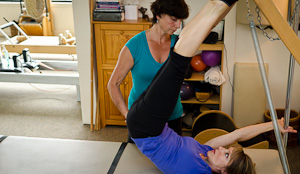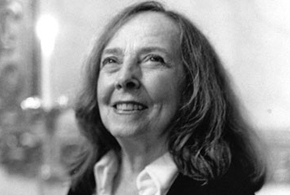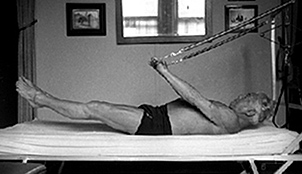is
the
Pilates Method?
The Pilates Method Of Body Conditioning was developed in the early part of this century by Joseph Pilates. He was driven by his fascination with developing the capacity of the human body and by his dissatisfaction with existing approaches to fitness. Over his lifetime, Joseph Pilates created more than five hundred exercises, completely unique to The Pilates Method, which are performed on floor mats and on an array of specifcally-designed apparatus. In the 1920's, he opened what became The Pilates Studio in New York City. After his death in 1968, Romana Kryzanowska (who trained both Nancy Etnier and Susan Gates) became the studio's director.
Joe Pilates was influenced by his Greek ancestors' classical understanding of the beauty and harmony of the human body, and the Spartan emphasis on physical strength and endurance. He was also influenced by the Eastern disciplines- his exercises utilize many aspects of yoga, and they stress breathing, mental relaxation and suppleness. It is this combination of Eastern and Western disciplines, exercising both the body and the mind, which makes this such a unique and enduring method.
The Pilates Method initially attracted dancers and athletes- for many years it was a training secret, limited to a small minority. Recently it has enjoyed a rebirth of popularity with people of all ages and stages of physical fitness. You don't have to be an athlete or dancer to benefit greatly from this system.

The goal of the Pilates Method Of Body Conditioning is a very high degree of abdominal strength, full body control, greater flexibility of the spine and the limbs, and most significantly, the combined power of the body and the mind. By performing many different exercises in a low number of repetitions, the muscles are strengthened and elongated without creating bulk. Total body concentration during each exercise emphasizes movement quality and coordination.
The Pilates Method’s benefits include
improved posture, flatter tummy, improved circulation, increased strength and flexibility, better balance and coordination, mind/body awareness, stress relief, emotional balance; exercise that’s fun and challenging
Studies indicate that exercise plays a significant role in reducing the risk of heart disease, stroke, colon cancer, osteoporosis and depression.


